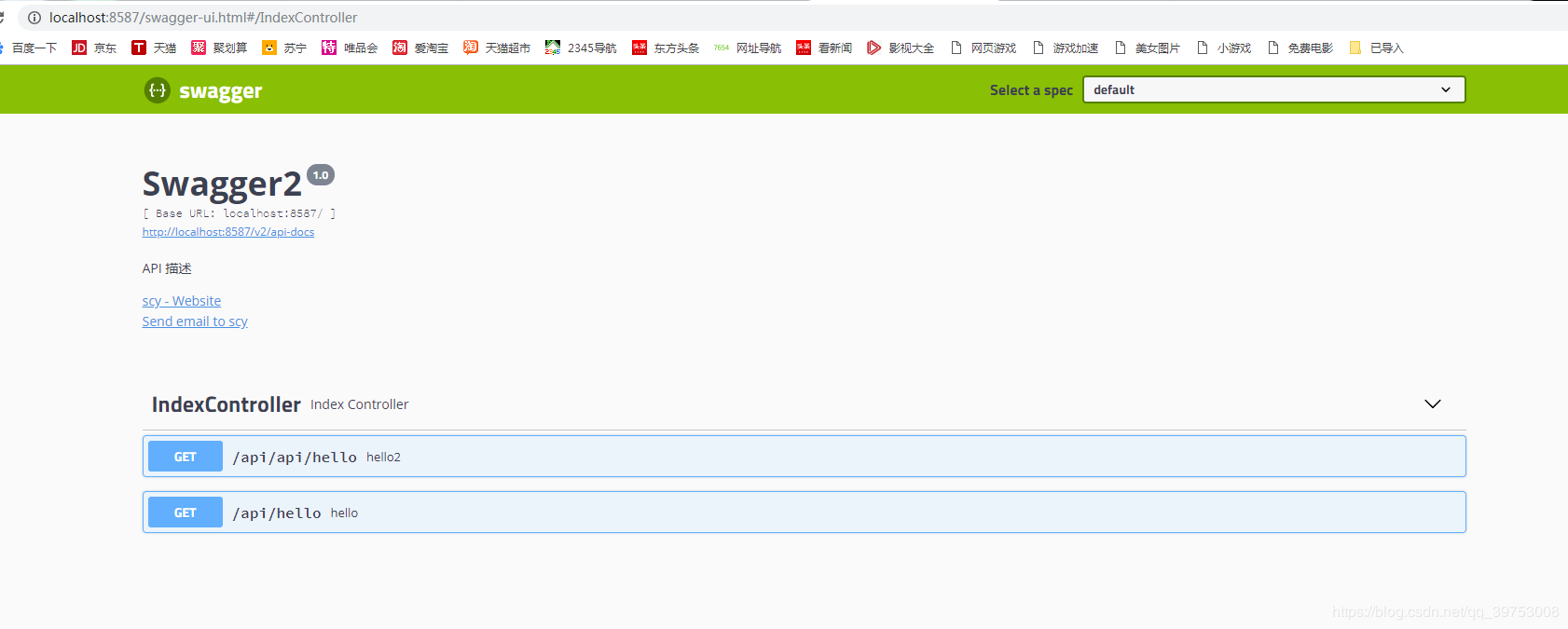今天就跟大家聊聊有关spring boot利用swagger实现配置yml文件,可能很多人都不太了解,为了让大家更加了解,小编给大家总结了以下内容,希望大家根据这篇文章可以有所收获。
java代码
package com.oauth.util;
import org.springframework.boot.autoconfigure.condition.ConditionalOnProperty;
import org.springframework.context.annotation.Bean;
import org.springframework.context.annotation.Configuration;
import springfox.documentation.builders.ApiInfoBuilder;
import springfox.documentation.builders.PathSelectors;
import springfox.documentation.builders.RequestHandlerSelectors;
import springfox.documentation.service.ApiInfo;
import springfox.documentation.service.Contact;
import springfox.documentation.spi.DocumentationType;
import springfox.documentation.spring.web.plugins.Docket;
import springfox.documentation.swagger2.annotations.EnableSwagger2;
@Configuration
@EnableSwagger2
//是否开启swagger
@ConditionalOnProperty(name = "swagger.enable", havingValue = "true")
public class Swagger2 {
// swagger2的配置文件,这里可以配置swagger2的一些基本的内容,比如扫描的包等等
@Bean
public Docket createRestApi() {
return new Docket(DocumentationType.SWAGGER_2).apiInfo(apiInfo()).select()
// 为当前包路径
.apis(RequestHandlerSelectors.basePackage("com.oauth.controller")).paths(PathSelectors.any()).build();
}
private ApiInfo apiInfo() {
return new ApiInfoBuilder()
// 页面标题
.title("Swagger2")
// 创建人信息
.contact(new Contact("scy", "666", "888"))
// 版本号
.version("1.0")
// 描述
.description("API 描述").build();
}
}yml文件
server:
port: 8587
spring:
application:
name: auth
eureka:
instance:
prefer-ip-address: true
client:
service-url:
defaultZone: http://localhost:8090/eureka/
swagger:
enable: trueswagger:
enable: true 这里是设置是否启动 本地和测试环境为true 正式环境为false
controller
package com.oauth.controller;
import org.springframework.web.bind.annotation.GetMapping;
import org.springframework.web.bind.annotation.RequestMapping;
import org.springframework.web.bind.annotation.RestController;
import io.swagger.annotations.Api;
import io.swagger.annotations.ApiOperation;
@RestController
@RequestMapping("api")
@Api(value = "测试接口", tags = "IndexController")
public class IndexController {
@ApiOperation(value = "hello")
@GetMapping("hello")
public String hello() {
return "Hello World";
}
@ApiOperation(value = "hello2")
@GetMapping("api/hello")
public String apiHello() {
return "Hello World";
}
}打开swagger页面 localhost:端口号/swagger-ui.html

如果swagger:
enable: false 这里设置为false

看完上述内容,你们对spring boot利用swagger实现配置yml文件有进一步的了解吗?如果还想了解更多知识或者相关内容,请关注亿速云行业资讯频道,感谢大家的支持。
亿速云「云服务器」,即开即用、新一代英特尔至强铂金CPU、三副本存储NVMe SSD云盘,价格低至29元/月。点击查看>>
免责声明:本站发布的内容(图片、视频和文字)以原创、转载和分享为主,文章观点不代表本网站立场,如果涉及侵权请联系站长邮箱:is@yisu.com进行举报,并提供相关证据,一经查实,将立刻删除涉嫌侵权内容。